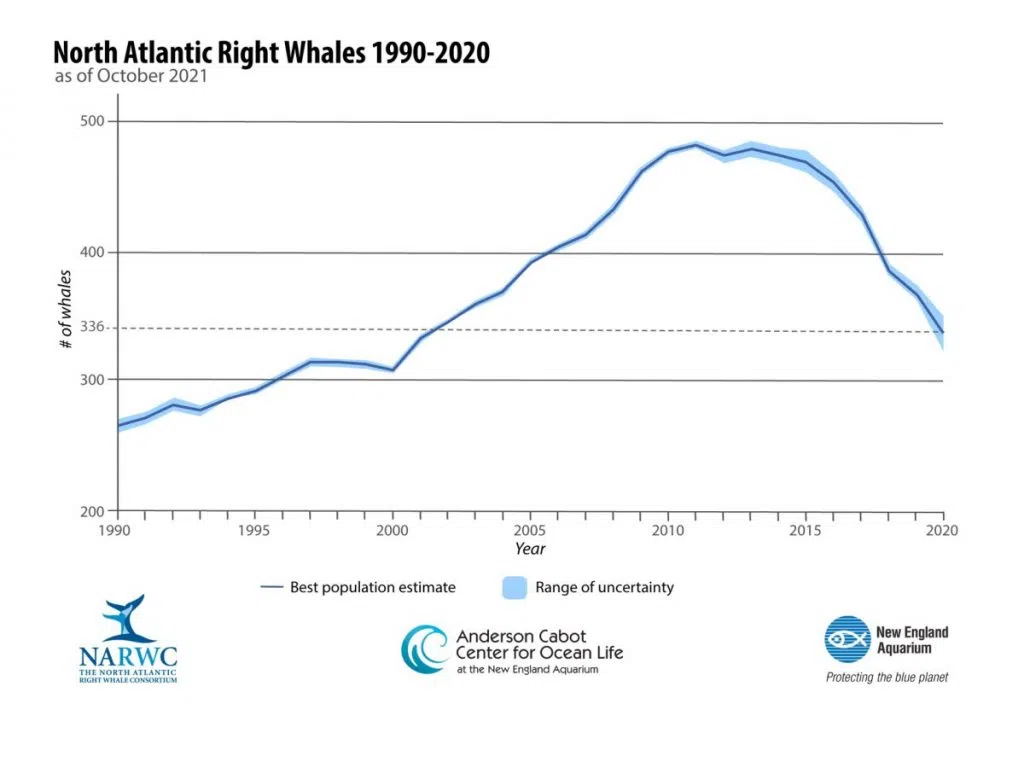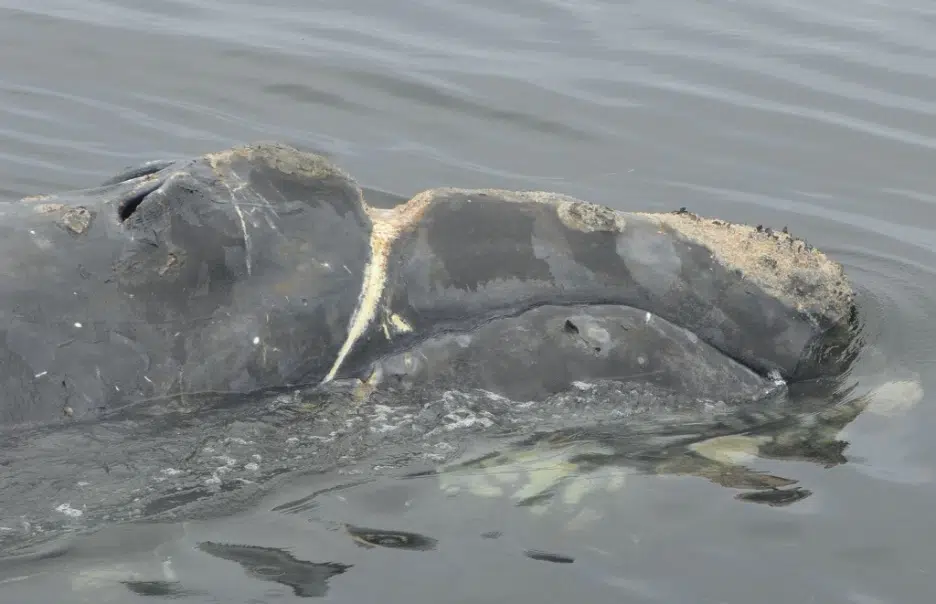A new report shows the population of the critically endangered North Atlantic right whale continues to decline.
The North Atlantic Right Whale Consortium says the population fell by eight per cent last year to 336 — the lowest in nearly two decades.
The population is down about 30 per cent from 2010 when researchers said there were nearly 500 right whales in existence.
“That precipitous decline is so alarming. We just need to make sure that people don’t toss in the towel on the species because of it,” Philip Hamilton, senior scientist at the New England Aquarium’s Anderson Cabot Center for Ocean Life, said in a news release.
Officials said there have been 34 documented right whale deaths since 2017, with human-caused factors such as entanglement and ship strikes implicated in 20 of those deaths.
One was a calf who died during the birthing process, and the other 13 had an undetermined cause of death, usually because the whale was either not retrieved or was too decomposed to perform a proper necropsy.
But the total number of deaths is likely higher as scientists believe fewer than one in three are observed.
“Given that the detected mortalities underrepresent actual mortalities by a significant amount, the state of this species is dire,” Heather Pettis, research scientist at the Anderson Cabot Center for Ocean Life, said in the release.

This graph estimates the number of North Atlantic right whales alive from 1990 to 2020. The dark blue line represents scientists’ best estimate for the species count, and the light blue area represents the range of uncertainty. Scientists report a right whale count between 322 and 350 in 2020, with a best estimate of 336. Source: Pettis et al. in review.
Scientists have observed two right whale deaths so far this year, including an 11-year-old male known as “Cottontail,” who was first spotted entangled in fishing gear off of Nantucket in October 2020, and a stranded right whale calf.
But there was some good news contained in the latest release of numbers. Researchers said 18 mother/calf pairs were detected during the 2020-21 calving season, the highest number since 2013.
Scientists estimate there are fewer than 100 reproductive females left, but that number could increase as younger female whales give birth for the first time.
“If we stop killing them, their population trajectory can and will reverse,” said Hamilton.








